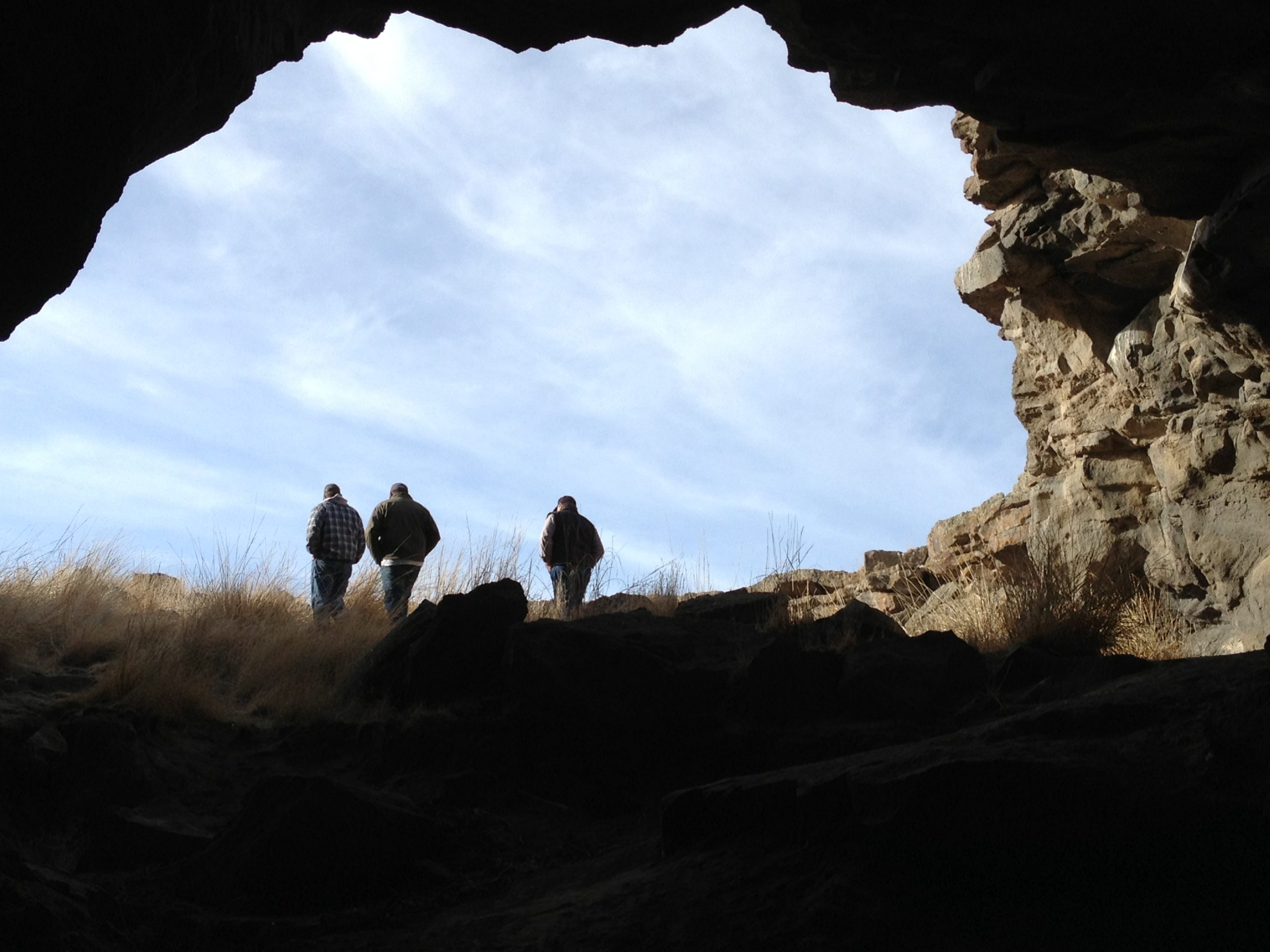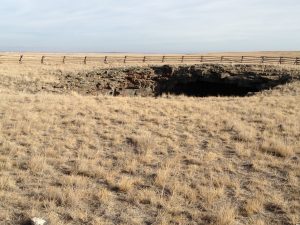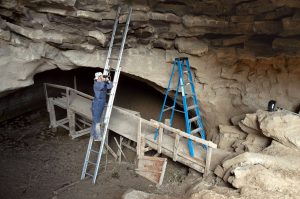An Ancient Preserve in Idaho
The Conservancy obtains a more-than 10,000-year-old cave where large game was hunted and processed.
The Conservancy has purchased the Croft Archaeological Preserve, its first preserve in Idaho.
Located on the eastern portion of Idaho’s Snake River Plain, roughly 19 miles northwest of Idaho Falls, the preserve consists of three caves that were created by collapsed lava tubes. The most extensively studied of the three is Owl Cave, which was first recorded in the 1960s by Helen and Richard Gildersleeve of the Upper Snake River Prehistoric Society (USRPS).
Owl Cave was initially excavated under the direction of B. Robert Butler, of Idaho State University, from 1965 to 1971. The excavators, digging to a depth of six feet below the surface, uncovered numerous projectile points in conjunction with a layer of faunal remains that consisted of more than 70 bison. The evidence suggests that this represents a bison drive where the animals were driven, trapped, and then speared inside the cave. The large deposit of bison bones dates to roughly 8,000 years ago, and it rests on top of a layer of rock debris from ceiling or wall collapse.
From 1974 to 1977, Susanne Miller, a doctoral student at Idaho State University, and the USRPS conducted excavations that dug beneath the collapsed rock debris, uncovering Folsom-style fluted points as well as mammoth, bison, pronghorn antelope, and camel remains. These deposit s date to over 10,600 years ago. The mammoth bones displayed signs of butchering and modification, evidence that humans and mammoths not only co-existed, but that the mammoth was hunted as an economic resource. There is evidence of sophisticated processing technology of the mammoth bones, including percussion fracturing and marrow extraction.
For decades, the Croft family has owned and maintained one of Idaho’s most important archaeological sites. Their sincere interest in protecting the cultural resources on their property resulted in important research opportunities. Wanting permanent preservation of the site, the Crofts turned to the Conservancy to create the preserve, which consists of a 10-acre parcel containing the three caves. The Crofts will continue to play an active role in the management and stewardship of the place they hold dear. —Cory Wilkins





